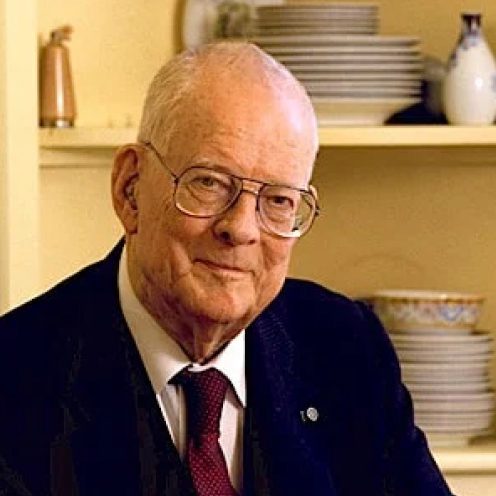
8 key ingredients for rapid process discovery

Navigating the complexities of business operations? “Rapid process discovery” is your compass. A process hierarchy lays out the critical processes, minimizing inefficiencies and safeguarding company knowledge. It’s not just a tool; it’s a game-changer. Dive into the 8 key ingredients for crafting this invaluable guide.
Process hierarchies visually demonstrate all of your critical business processes. Think of one as being a little like an architectural blueprint for a house. Rather than beams and rafters, a process hierarchy shows the processes that keep your business upright.
Table of contents
They can also be seen as a supplement to your organisational chart. The organisational chart shows how departments and roles are related, while the process hierarchy shows how activities are related and how they deliver the outcomes that are needed to attain your organisation’s goals.
Yeah, but why should I care? You may ask.
By recording your processes you give your employees a common language and a clear understanding of their responsibilities. They map the small stuff, like how a receptionist should take a phone call, or how to send a late payment notice, to the very big and important stuff such as hiring a new head of a department. They also allow you to continuously measure and incrementally improve the processes happening across your business, reducing waste and increasing effectivity. Having one really is a no-brainer.
What do I need to get to my critical business processes?
Right, so you’re up for the challenge. Great, Gluu is here to help with eight essential ingredients for building a usable process hierarchy.
1. Coffee
Let’s get this out of the way off the bat: there’s nothing sexy about process hierarchies. If you’re the type who gets excited by them, don’t be embarrassed; we get you – we’re kind of similar. But for the vast majority of humanity, including many of your colleagues, mention of them elicits little more than mild cases of narcolepsy. Be kind, have coffee ready before raising the topic. You don’t want your colleagues going like this:

2. The Nod
Armed with coffee and a dazzling array of value-add justifications, approach senior management and get their approval and support for a project to create a process hierarchy. This is absolutely essential. Without the nod, you’ll go nowhere fast.
3. A whiteboard
Find your best facilitator, pull senior management into a half-day offsite workshop and draw up a map of your value chain; all the processes you do as a company from start to finish. This first outline will provide the foundation for the rest of the project. If you’d like more information on this, check out our ideas for collaborative process workshops.
4. Telescopic vision
Zoom in and sharpen the focus on the most critical processes to your business first. Find the 10 to 30 processes that really matter. They’re the ones that keep the wheels from falling off. If your vision is too broad too soon, and you try to nail down every single business process, you’ll get bogged down in the details and lose sight of the essentials.
”Improvement is not a one-time effort. Management is obligated to continually look for ways to reduce variation.”
W. Edwards Deming

5. An old wheel
Mapping a process hierarchy can be time-consuming. So make life easier as much as possible, model your process hierarchy on standards and frameworks you already have. There’s no reason to reinvent the wheel. Talk to your IT guys – they might have done something similar to prepare for a systems implementation.
6. Movers and shakers
You’ve recognised and mapped the critical processes happening in the company. The next thing is to assign responsibility for each of these to specific team members. Some of these people will be obvious, like department heads in a big company, but in some cases, they won’t be and you’ll need to investigate who are the real movers and shakers.
7. Tools
Once you’ve taken care of everything above, it’s time to get down to details. For this, you’ll need a format and tools that help you visually map and design your process hierarchy. Key for success here is that whatever format or tool you use, it must be shareable and easy to collaborate on company-wide. Interested in a tool that streamlines this?
Check out Gluu’s business process management software. If the process hierarchy stays in one room, guarded by one or two wizards, it will go the way of countless other process hierarchies and end up dead and buried.
8. Captain Process Hierarchy
Now it’s time to take the project out to the whole company. For this, you’ll need an exceptional individual to lead the way. Choose a super-powered project manager with a broad understanding of the business and someone who can talk to the people both in the boardroom and on the shop floor.
Learn more about process hierarchies
There’s a lot more that could be said about process hierarchies, such as why so few companies even have them. For more on the topic, read our guide to creating a business process hierarchy.
👉 Recommendation: A clear and concise guide on establishing a robust process hierarchy, essential for any business aiming to optimize operations and enhance efficiency. Highly recommended for leaders eager to improve their organizational processes.
Conclusions
In the intricate dance of business operations, understanding and optimizing our processes stands paramount. The 8 key ingredients highlighted not only serve as a foundation for rapid process discovery but also underscore the vitality of a well-structured process hierarchy. As leaders, recognizing these essentials paves the way for streamlined operations, minimized inefficiencies, and a stronger, more resilient organization. Embracing these principles is not just a strategic move, but a transformative one.
Frequently Asked Questions
A process hierarchy provides a visual representation of all critical business processes, ensuring that operations run efficiently. It aids in reducing redundancies, curbing inefficiencies, and preserving crucial knowledge within the organization, thereby driving performance and growth.
Rapid process discovery is a methodical approach to quickly identify, map, and understand business processes. In the article, it signifies the efficient breakdown and understanding of essential components that form a robust process hierarchy, allowing businesses to adapt and optimize swiftly.
While both provide structure, an organizational chart focuses on roles, departments, and their interrelations, whereas a process hierarchy highlights the flow and relationship of business activities. The former emphasizes personnel structure, while the latter underscores operational flow and efficiencies.



